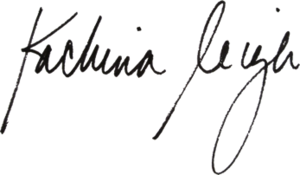Excerpt from the essay by Marian Frances Wolbers in the exhibition catalog for the Alphabet of Expectations. Catalog with full essay and color images of each dress with details is available for purchase at Pretzel City Press.
Word-Stitching: The “Alphabet of Expectations” of Kachina Leigh
By Marian Frances Wolbers
Kachina Leigh’s “Alphabet of Expectations” is a compelling tour de force of delicate simplicity with utterly challenging complexity. Over a decade, the artist worked to honor several handmade vintage baby and child dresses, while transforming each piece into separate statements exploring societal expectations of girls and women. Leigh is perfectly at home with needlework and fabric, revealing specific words that correspond with each letter of the alphabet from A to Z. Her sculptural parody mimics A-B-C books that traditionally exist to teach children how to read, and—naturally—due to the nature of materials used, evokes memories of early-American samplers.
Viewers will be keen to observe not only the beautifully expressive stitches and elegant lettering on the front of all these dresses, but also the backs containing embellished words that Leigh has chosen to represent each letter—all with regard to sex and gender. A is for “adulteress,” for example, while C is “cougar.” Many of the words are old and persistent stereotypes assigned to females and their perceived behaviors; others are newer designations that have entered modern lexicon as clear and even crass epithets about the body and sex, serving to pigeonhole young girls and older women alike.
Judgments based on sex, sexuality, conquest, body parts, competition, immorality, and failure are embedded in embroidery here, through Leigh’s classy lines, colors, and imagery. From “E is for…easy” to “N is for…nag,” to “S is for…slut” and “W is for witch,” Leigh’s straight-talkin’ needle juxtaposes beauty and artistry with a provocative reality, pointing to the ways in which words are used casually and cruelly in daily conversations by men, boys, girls, and women themselves. The artist says, “As someone who loves language and the way in which each generation finds meaning in the words they choose to use, I would hope that everyone would think more about the power their words possess.”











